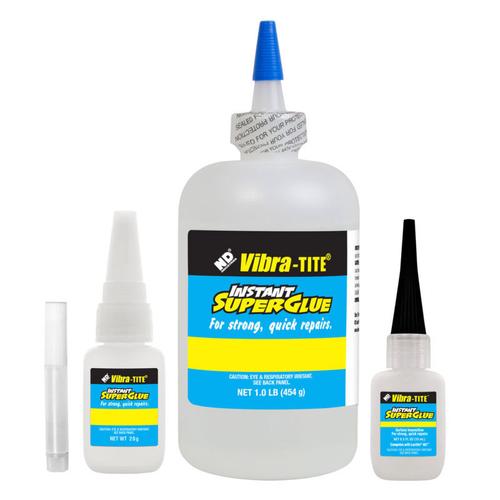Using adhesives is a great way to bond metal when soldering and welding are not options. If you've ever tried to join two pieces of metal, then you'll know that it's a little more difficult than bonding paper, wood, or board. Here's what you need to know about metal bonding glue and what you should consider before you take on the task.
What type of glue can be used to bond metal?
Methacrylate: Commonly referred to as an MMA adhesive, this glue is a great option for bonding metals because it requires very little, if any surface preparation. You won’t have to worry about bonding to dirty, coated or other un-prepped surfaces.
Super Glue: Super glue can be a successful choice for bonding metals, provided the two surfaces fit together well. The bond line will need to be tight for the glue to do a good job. Super glue works best when there will be a low impact on the bonded surface after curing. So, it's best not to use it for any parts that are exposed to excessive pressure, like metal joins or clasps. Super glue can set in seconds, so you'll need to work quickly. Prepare the surface and make sure you know how to match the pieces up swiftly and accurately before you apply the glue.
Hot glue (glue guns): A glue gun is only an option when only one of the surfaces is metal. It will also need to be a light metal. Don't use a glue gun when the glue will be exposed to elevated temperatures after curing. Hot glue is manufactured to react with heat.
Polyurethane: Polyurethane adhesive is an excellent option for metal bonding. It is a multipurpose adhesive that doesn't need to be mixed or measured before using. If you're using polyurethane, we recommend you use a clamp to keep both surfaces steady and secure while the glue dries. The bond will be tough and strong after six to eight hours of curing.
Epoxy: Epoxy glue is another good choice for bonding metals. Epoxy is more involved than other types of adhesives, but it generally creates the strongest metal-to-metal bond.

What adhesives won't work?
Types of adhesives that won't work for your metal bonding are fabric, wood, craft, or spray adhesives.
How do I prepare the surface for bonding?
Metal surfaces tend to stick better if you give each surface a light sand with fine grit sandpaper before you attempt to bond it. The abrasion helps the adhesive stick to the surface. Wipe each surface with methyl ethyl ketone (MEK) or acetone. Use a clean cloth that won't leave fibers behind. Do the wipe-down whether you've chosen to sand the surface or not. Use a heavier degreaser if there is any oil or grease on the surface. Once you've removed the oil, give the surface a quick wipe with acetone or MEK to make sure that the degreaser is off. Allow each surface to dry completely before you apply the adhesive.
How do I know if the glue will stick to my metal?
Test your adhesive on a small surface area. If you see that the adhesive forms beads on the surface, then it isn't suitable for bonding that particular type of metal. Try it again after a light abrasion. You should be able to spread the adhesive evenly across the surface. When it distributes evenly without forming beads, then you probably have the right glue for the job.
Why must I remove rust or paint before I glue metals?
When you bond metals, you must get the two metal surfaces to bond with each other for a secure, long-lasting bond. If the surface is rusted or painted, and you don't remove the layer, then you're bonding rust to rust or paint to paint. When you subject the bonded metal to any pressure, the paint or rust will stick securely to the adhesive but will pull away from the metal surface, causing the bond to break. The same thing will happen with mold, dust, oil, or any other contaminant. Make sure you remove any surface materials or dirt from the surfaces before you attempt the bond. This helps ensure the tightest and strongest structural bond possible.

How do I use an Epoxy duo or two-part cartridge?
Most types of epoxy glue come in two parts that need to be mixed. The solutions will either come in two separate tubes or one tube with two isolated compartments. The two solutions must be mixed just before you're ready to apply the adhesive. You may have chosen an option that needs to be mixed by hand. In this case, squeeze equal volumes from each tube into a flat container and mix for about 15 seconds after the color becomes uniform. Apply the adhesive and clamp the join to cure securely. Some brand instructions might vary, so always read your instructions before mixing.
A Lasting Bond
Bonding metals can be successful if you choose the correct adhesive and follow the necessary preparation process. Before long, you'll have a lasting bond you can be proud of.

